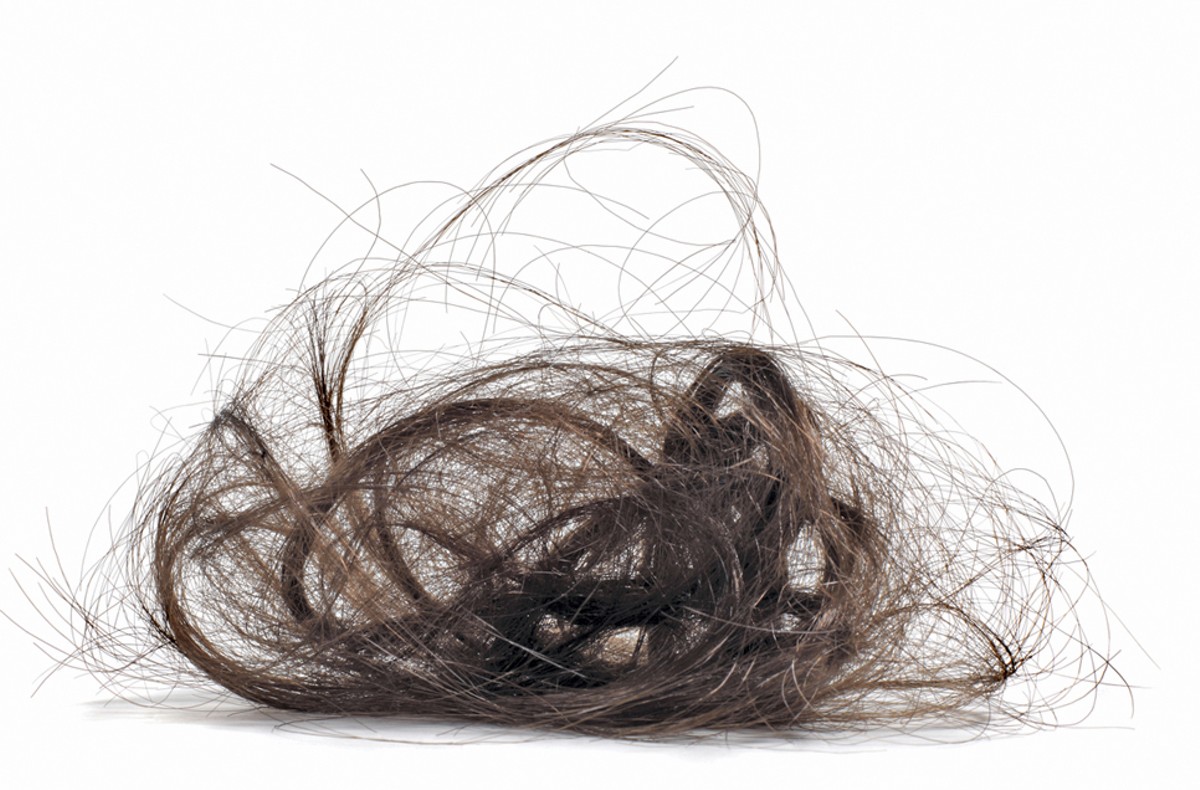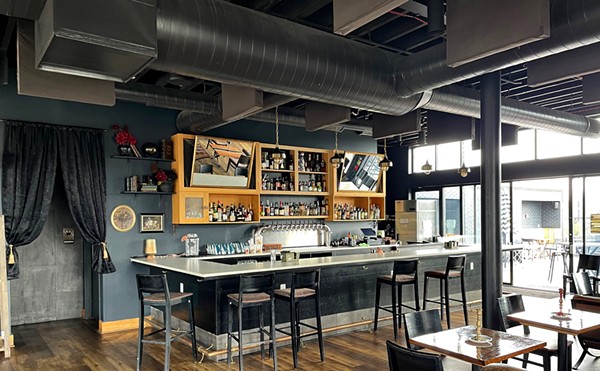This might come as a shock, owing to the fact that I'm a restaurant critic and all, but I could not care less about finding a hair in my food. My complete and unmitigated indifference to discovering a loose lock in a plate of pasta or bowl of bouillabaisse is well known among my friends, so I might as well confess it here.
Maybe it's because I grew up in a house with four older brothers, or perhaps it's the never-ending flurry of pet hair that is part and parcel of having dogs, but the truth of the matter is, I really don't give a crap. In fact, I consider the act of discarding an entire plate of wholesome food at the expense of a wayward bang more distasteful than the bang itself. At a time when new end-of-the-world scenarios pop up with nightmarish frequency, isn't throwing a hissy fit because you spotted a busted wig in your build-your-own taco a tad gauche?
Obviously, my lenience has limits. Nobody wants to see an entire curl, braid or dread bobbing like an oyster cracker in their bisque — me included. But a single, clean strand of hair is no more hazardous than a freshly washed hand — and we trust our food-service professionals to take the necessary precautionary measures in that regard. Don't believe me? Then consider the stance of the Food and Drug Administration, which finds the risk of harm so negligible that it places no ceiling on the number of allowable strands in one's platter of pierogi (then again, the FDA also permits up to one maggot for every 100 grams of tomato juice).
I get it. To many diners it's not the fear of illness that unsettles the stomach, but that creepy-crawly ick factor that comes from spotting a body part (albeit a lesser one) on a plate of food. That hair becomes like a loose thread: The more you tug, the more your appetite unravels into a queasy soup of despair, until all you want to do is run home and shower.
For me, not so much.
Of course, I would much rather not find a hair in my food. The good news is that it rarely happens. Despite eating countless meals in restaurants of all genres, price points and service structures, the incidence of a misplaced mullet thatch or mohawk cast-off is remarkably low. That is because most kitchens take precautions to prevent it from landing on your plate in the first place.
"Kitchen employees have to wear some sort of hair restraint, like a hat, bandana or hairnet," explains chef Eric Williams, owner of Momocho and El Carnicero. "Also, facial hair like beards can't be any longer than your eyebrows, or else you have to wear a beard restraint."
But protective clothing is just the first line of defense against rattail infestation. After the cook or chef is done plating the food, it is handed off to an expediter, runner or server, all of whom should be examining the dish for imperfections and remediating the situation. In practice, that means that in some cases there was a hair on your plate, it's just that somebody already has removed it. Why not simply do the same and get on with it?
Williams and his kitchen crews are not perfect, and he readily admits that a clandestine cornrow or comb-over can sneak by undetected, concealed by a tamale cornhusk or buried deep in a puddle of queso.
"It's impossible to prevent it from happening," Williams admits. And when it does occur, and if the customer does take umbrage, he adds, "Of course we will re-cook their food, no questions asked and apologize."
Am I the norm or the anomaly in this regard? Williams said that he lives in a divided family. If he was the diner who stumbled across some shag in his lamb shanks, "I would probably just pull it off and keep eating," he reports. "But my wife would probably put it on the side of her plate and ask to have it recooked."
Both are acceptable reactions. Unacceptable maneuvers include: making a scene in the restaurant; eating most of the food and then demanding that it be comped; keeping mum until you have a chance to thoroughly flame the restaurant on Yelp; and pouring loads of salt onto the food before sending it back to make sure that the kitchen prepares a new dish (this is a popular suggestion on Reddit, by the way).
We all have different levels of tolerance when it comes to what we deem objectionable, hazardous or unsanitary. To me, an errant bob is bearable, deeply discounted sushi is hazardous, and the vendor at the West Side Market who wears the same pair of dingy latex gloves to grab your raw chicken as he or she does to take your cash is unsanitary, hazardous and utterly objectionable.










